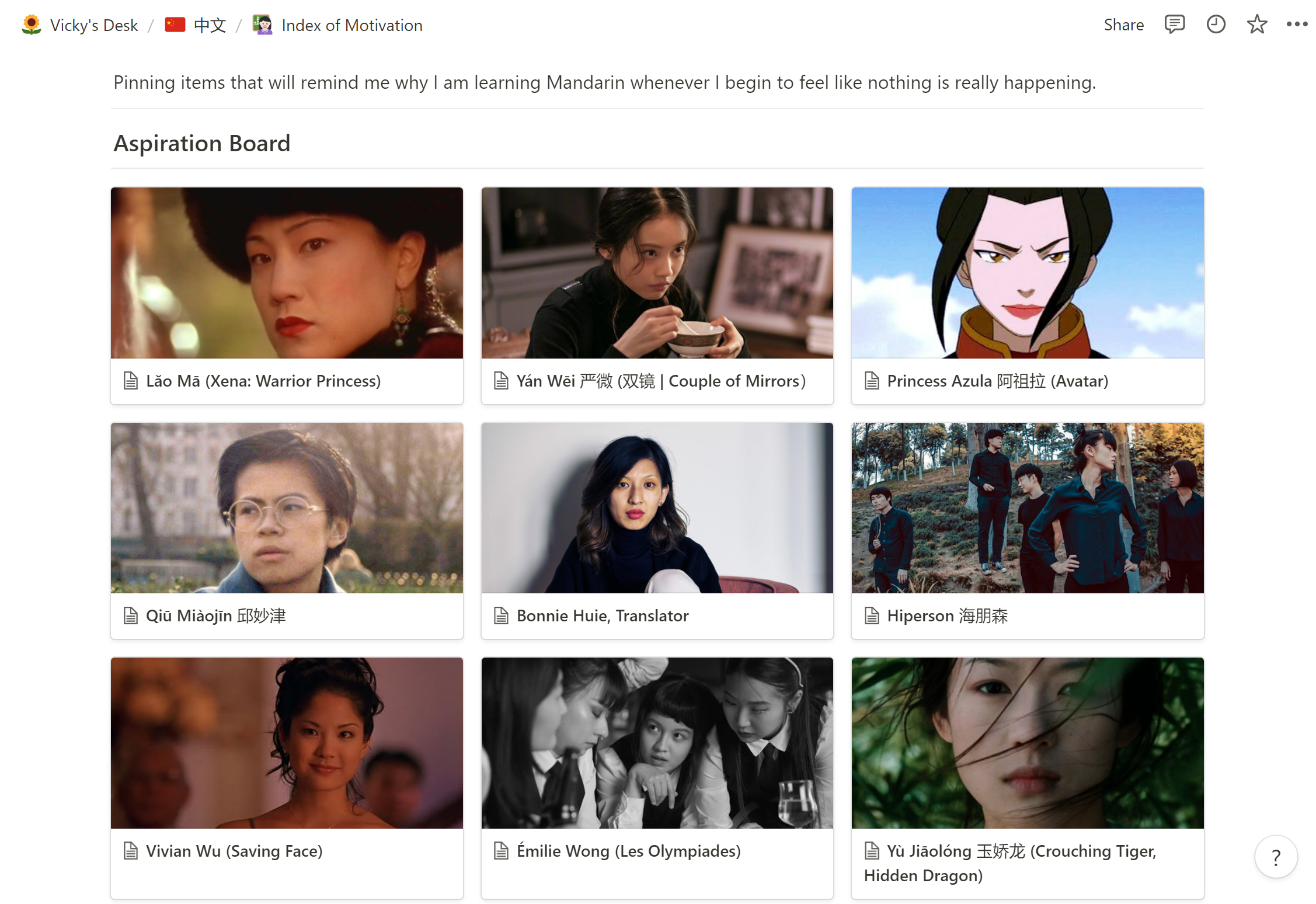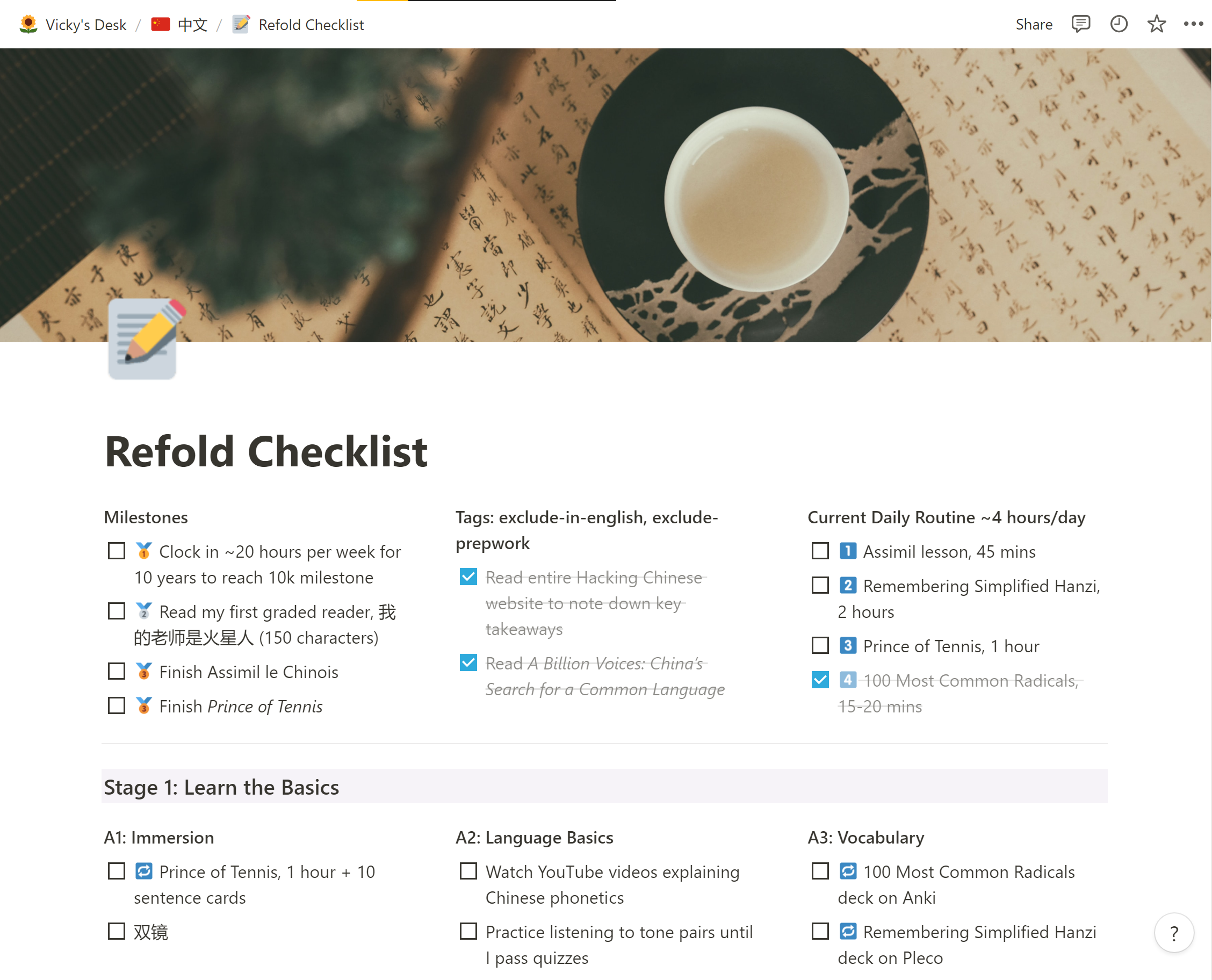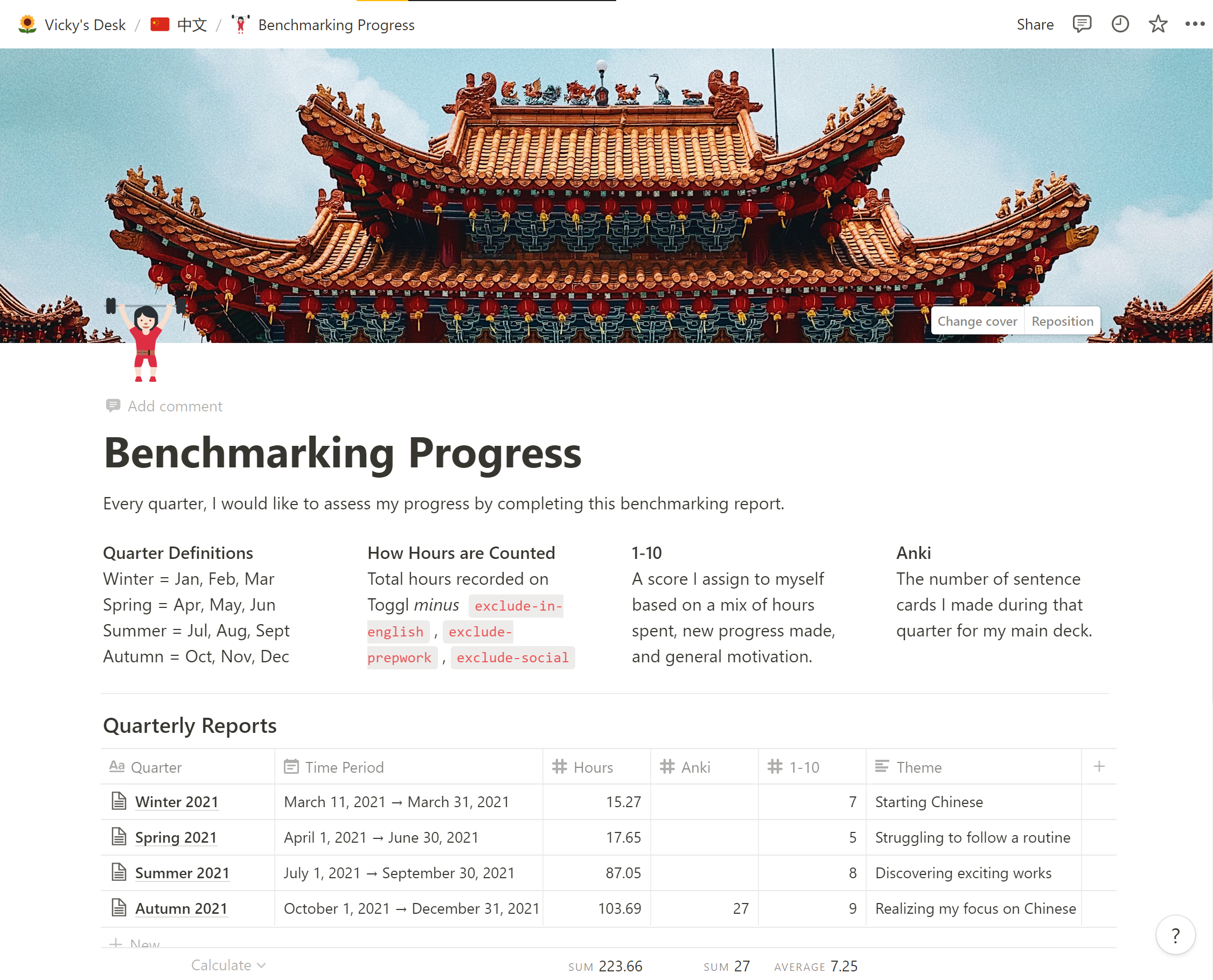Learning Chinese in 2021
Out of nowhere on Valentine’s Day this year, after one of my regular conversation practice sessions with my French tutor, I began searching online for Mandarin resources. In hindsight, I was probably looking for a distraction out of my intermediate plateau with French, where I am still struggling to stretch from B1 to B2. One click led to another until I decided to order Assimil: Le chinois, sealing my commitment that it will be the next language I learn.
There is a lot more for me to reflect upon with this process, since it involved taking some unexpected tangents, like me trying to map out my family tree and history as futile as it seems to be, or trying to learn about China “in general” (lol), then slowly unpacking Chinese American identity baggage that I must have been in denial about carrying up until now. More on that another time. Right now, on this last day of another wtf year, I just want to record my digital setup for language learning.
Approach
I am learning through comprehensible input, so I am following what has been popularized by Stephen Krashen and his second language acquisition theory. I am also referencing these two related resources frequently:
Time

I have been using Toggl Track for everything related to Chinese. I love this tool and have been using it since 2017 to track my work hours and select personal projects.
I started tracking French around the same time as Chinese in March only to make sure I was managing both languages well, but I regret not tracking it from the beginning in Oct 2019 because now I don’t have a way of assessing my progress over time. Oh well. At the time, I was determined not to track activities intended “for myself,” since I was influenced by the idea that being too analytical took away some joy.
I set up a “汉语” project and recorded each time entry following this convention: [Content Type/Source] Standard Title. I used tags for each competency: area-listening, area-reading, area-speaking, area-writing. I also used tags for each intensity level: mode-active, mode-passive, mode-intensive, mode-extensive (the latter two apply moreso to reading). Any traditional study of the language or reviewing flashcards would be separated out and assigned only one of two tags: study-grammar or study-vocabulary.
Motivation

I was not using Notion too well until I finally cleaned it up and started a sort of mood board of my inspiration. I have never been able to look at the sources of my motivation in one place like this before, so it was important for me to curate it for myself and remember how a movie like Saving Face (Alice Wu, 2004) was really the first time I felt—
I actually keep the Index of Motivation as a tab open in my browser most of the time now while I study.
Routine

As careful as I have been in designing my routine, I am still in trial-and-error mode where I realize I have been doing something ineffectively or inefficiently.
Ten months later, if I could start over, I would not waste time with a pre-made 1,500 hanzi deck on Anki and instead go through Remembering Simplified Hanzi volumes 1 and 2 by Heisig. I postponed it because I watched a video of someone learning Japanese who reflected that they would not have started Remembering the Kanji (also by Heisig) as early as they did.
Another thing, I would also spend way, way more time actively immersing in shows on Netflix while using the Language Reactor Chrome extension, but it was also hard because many of the shows available were over-the-top or ancient wuxia stuff that I did not think I would enjoy.
Currently, for 2022, I will try not to follow a “routine” but moreso I will aim high to clock in 3 hours of immersion and 1 hour of Anki card creation + reviews per day. Then on the weekends, I will add in grammar + a check-in with my tutor.
Progress

This fall, I read Make It Stick: The Science of Successful Learning and one of my main takeaways was to set up some kind of “evaluation form” to check in with myself.
The end of the month is one of my favorite times because I get to fill out the reflection pages in my Passion Planner, so a lot of my questions were adapted from those. Within the “page” of each Quarter, this is my template:
-
Insert Screenshot of time tracking report:
-
What did I work on this quarter?
-
What was challenging and what lessons did I learn?
- I subscribed to a VPN but it is still impossible to access any Chinese sites. I can’t get into WeChat, Weibo, Douban, or anything :pensive:
-
Am I satisfied with how I spent my time? If not, what do I need to adjust?
-
Record a video or other documentation of myself performing each of the four language competencies. Then, reflect, how have my skills developed from this quarter compared to the previous one?
- Reading:
- Listening:
- Writing:
- Speaking:
-
What were some new discoveries of this quarter, like apps, tricks, bands, shows, cultural or linguistic knowledge, etc?
- 双镜 | Couple of Mirrors, the only “girl love” drama that anyone seems to know in current existence, set in Republican Shanghai with vibes from the board game Clue x Killing Eve x Lupin, please let me know if you watch this and thank you B. for linking me this show!
-
What are three areas I can improve on in the next quarter? How will I make it happen?
-
Name one accomplishment of this quarter:
/
Thank you to these blogs/posts that helped me:
- “How I learned 1500 Chinese Characters in a Month - Heisig Method Review” by Pavel Danov a.k.a. _hao
- Hacking Chinese: A better way of learning Mandarin by Olle Linge
- “How to Type in Pinyin on Windows 10” by Felix Wong
- “How to make a realistic digital personal Chinese seal” by Lin Yangchen